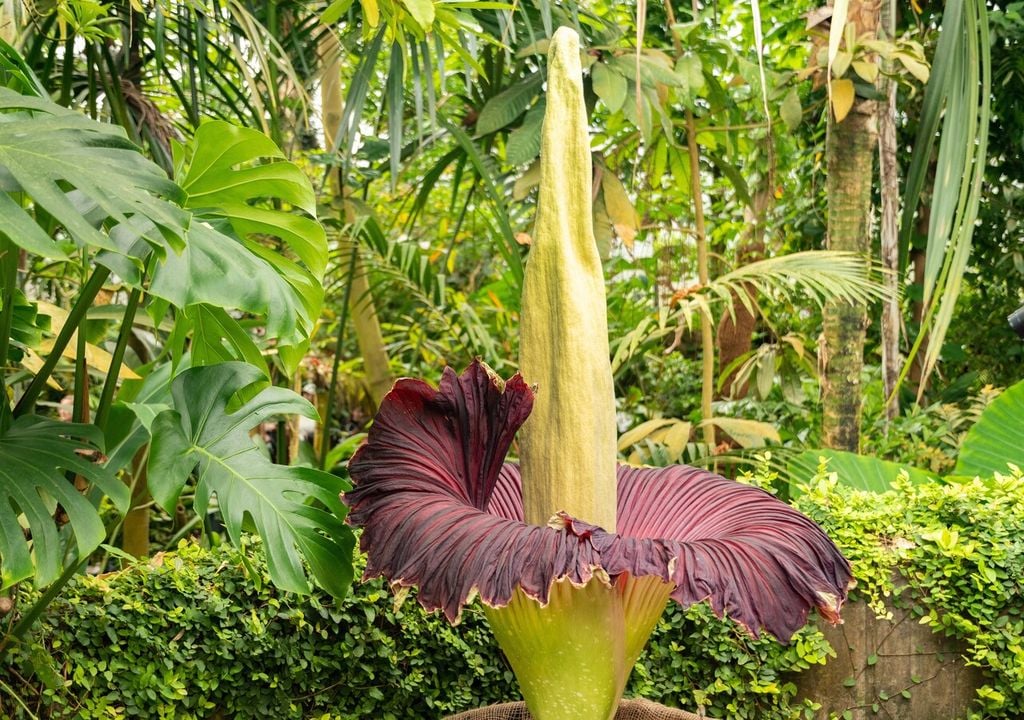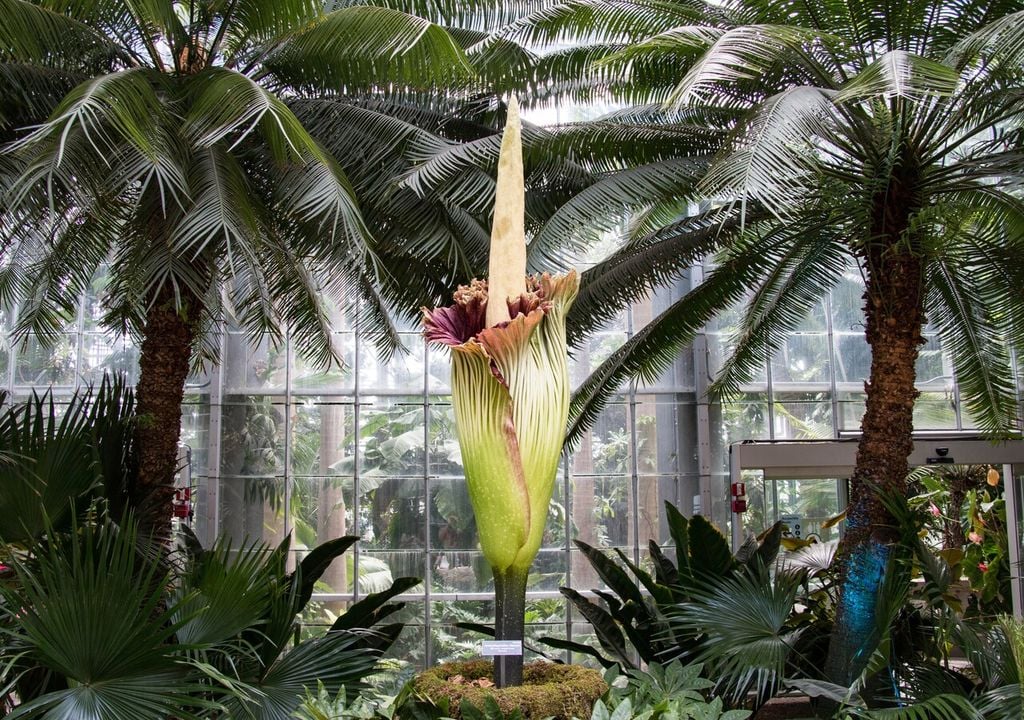La flor que huele a muerte pero todos quieren ver: descubriendo la rara y fugaz "flor cadáver"
The last one bloomed in the Warsaw Botanical Garden and attracted countless tourists and visitors. Its rare, fleeting, and unpleasant-smelling bloom is an event that never goes unnoticed. Let's learn more about this plant and its characteristics.

On August 4, 2025, at around 8:00 p.m., the Botanical Garden of the University of Warsaw was the scene of a rare and fascinating event: the flowering of Amorphophallus titanum , the titan arum or giant arum, commonly known as the “corpse flower” .
The plant, native to the tropical rainforests of Sumatra, is famous for both its imposing size and the intense and unpleasant odor it emits during the brief opening of the inflorescence.
The phenomenon attracted hundreds of visitors , curious to observe up close a specimen that blooms only once every several years and whose spectacular, but ephemeral, spectacle lasts only a few days.
Origins and botanical characteristics
Amorphophallus titanum grows wild in the tropical areas of the Indonesian island of Sumatra , where the warm, humid climate and organic-rich soils provide ideal conditions for its development.
It belongs to the Araceae family, like calla lilies and dieffenbachias , and is famous for its exceptional size and its particular life cycle, characterized mainly by vegetative cycles alternating with few flowering cycles.
Leaf cycle
In a “vegetative” year, a single leaf of imposing proportions emerges from the large underground tuber , which can weigh tens of kilograms.
The function of this phase is to accumulate energy through photosynthesis , storing it in the tuber for the next flowering.
Flower cycle
When the plant has accumulated sufficient reserves, the leaf cycle stops, and an inflorescence emerges in place of the leaf. This is one of the largest unbranched inflorescences in the world: a central axis (spadix) surrounded by a large bract (spathe) that is green on the outside and reddish-purple on the inside .

At the base of the spadix are the flowers themselves, both male and female, arranged in distinct zones and with staggered maturation times, so as to promote cross-pollination.
During the first hours of flowering, the plant gives off an intense smell of rotten meat, produced by volatile sulfur-based compounds, which attracts flies and necrophagous beetles: these insects act as pollinators, transferring pollen from one specimen to another (in fact, in nature, in the plant's native range, it is not uncommon for several individuals to flower at the same time).
If fertilization occurs, the spadix gives way to an infructescence formed by colorful berries , which contain seeds ready to be dispersed by birds and other frugivorous animals.
Where in the world can we see this flourishing and some precedents?
Due to its exceptional size and specific climatic requirements, Amorphophallus titanum is cultivated in only a few botanical gardens in the world, equipped with tropical greenhouses capable of reproducing its natural habitat.
There are specimens present, among others, in the Royal Botanic Gardens at Kew (London) , the Botanical Garden of the University of Bonn (Germany) , the New York Botanical Garden and the Huntington Library (California) .
Each of the rare blooms recorded in the past at these facilities has attracted considerable media attention: in 2016, for example, a specimen at Kew Gardens drew thousands of visitors in just a few days, while in 2018 the bloom in New York generated long lines and live videos followed by enthusiasts around the world.

The Warsaw event is part of this tradition, combining science, curiosity and the feeling of being at the scene of an event that will probably never be seen again in a lifetime .
When will the next flowering be?
Determining precisely when an Amorphophallus titanum will flower is extremely difficult. Botanical gardens carefully monitor various parameters, such as the tuber's size and weight, temperature and humidity conditions, and its overall health. Even so, predictions are approximate: in some cases, flowering may occur three or four years after the previous one, while in others it may take more than ten years .
What makes the event even more unpredictable is the possibility that, just before opening, the plant may "change its mind" and produce a leaf instead of an inflorescence. This same uncertainty contributes to the allure of the corpse flower, transforming each bloom into an unpredictable surprise until the very last moment .
The attraction to nature in today's world
The flowering of Amorphophallus titanum is an example of how nature, fortunately, is still capable of surprising us today with its powerful manifestations .
Like the Northern Lights or the short cherry blossom season, this event is fascinating precisely because it doesn't adhere to predictable patterns: it requires patience, attention, and a bit of luck to be admired.
In an age where most experiences are just a click away, Amorphophallus titanum reminds us that the spectacle of nature remains tied to rhythms and laws that are not always predictable, and that waiting is sometimes an integral part of the spectacle.








